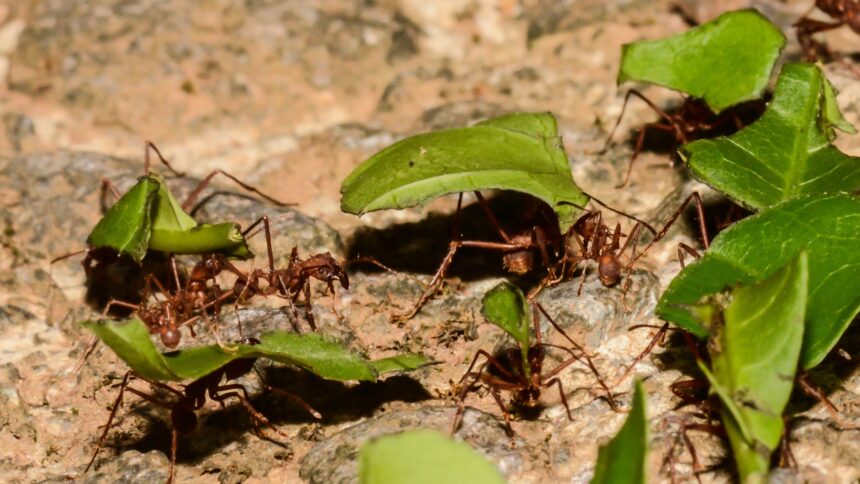“`html

While the Chicxulub asteroid impact was catastrophic for dinosaurs, it inadvertently set the stage for the ancestors of modern ants to thrive. The environmental changes triggered by this event around 66 million years ago may have been pivotal in teaching certain insect species to cultivate fungi long before humans appeared on Earth.
A recent study published on October 3 in Science involved a collaborative effort from researchers at various Brazilian and US universities, along with experts from the Smithsonian Institution. They analyzed genetic data from numerous ant and fungal species to reconstruct their evolutionary histories. By comparing these timelines, they identified a significant intersection point that coincided with the aftermath of the Chicxulub impact.
“The origins of fungus-farming ants were relatively well documented; however, we lacked a precise timeline for these microorganisms,” stated André Rodrigues, a researcher at São Paulo State University (IB-UNESP) and co-author of the study. He emphasized that this new research provides an unprecedented level of accuracy regarding when these fungal strains emerged, which were previously believed to be more recent developments.
It has long been recognized that debris propelled into Earth’s atmosphere by this massive asteroid created prolonged periods of low light. While this environment proved fatal for approximately 70% of all life forms on Earth, it became an ideal breeding ground for specific fungi that thrived on decaying organic matter. Concurrently, as plant and animal populations dwindled, early leafcutter ant ancestors adapted by cultivating these microorganisms.
Understanding how fungi-ant mutualism originated required examining ultraconserved elements (UCEs)—genomic regions preserved across extensive evolutionary timescales.
“Our focus was on areas adjacent to these elements since they reveal recent divergences among species and enable us to trace an accurate evolutionary lineage,” explained Pepijn Wilhelmus Kooij from IB-UNESP and co-author of the paper.
However, it took nearly 40 million years for ants and fungi to establish a truly symbiotic relationship. According to insights shared by the Smithsonian, rapid cooling around 27 million years ago led ants to transport fungal species from humid environments into arid ones—effectively isolating them from their original habitats. This isolation resulted in fungi becoming entirely reliant on ants for their growth and survival—a phenomenon known as higher agriculture where ants gather fresh plant material for their fungal partners as it decomposes. The microorganisms then generate threadlike structures called hyphae which develop nutrient-rich bulbs known as gongylidia that serve as food sources for the insects—demonstrating that ants mastered farming millions of years prior to human agricultural practices.
[Related:[Related:[Related:[Related:Earth is home to nearly 20 quadrillion ants.]
“Ants domesticated these fungi similarly to how humans cultivated crops,” remarked Ted Schultz, curator at the Smithsonian Institute and lead author of the study in an official statement.
“The fungus breaks down organic materials collected by ants while providing nutrients essential for ant survival—essentially acting like an external digestive system.” added Mauricio Bacci Junior from IB-UNESP.
Today’s ant farming practices have led not only to diverse fungal species adept at producing food but also effective at decomposing organic waste materials. Researchers are now exploring ways harnessing enzymes produced by these fungi could aid in safely breaking down harmful substances such as plastics—potentially paving pathways toward sustainable recycling solutions inspired by some of nature’s earliest agricultural innovators: our planet’s ancient ant populations.
Source
“`






